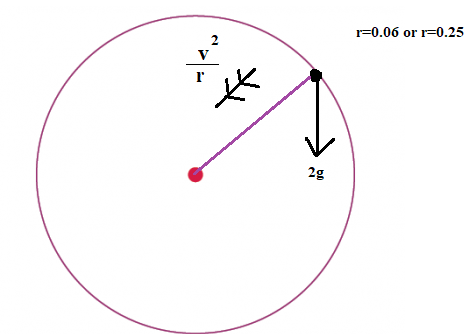A model train with a mass of #2 kg# is moving along a track at #9 (cm)/s#. If the curvature of the track changes from a radius of #6 cm# to #25 cm#, by how much must the centripetal force applied by the tracks change?
2 Answers
The change in centripetal force is
Explanation:
The centripetal force is
The mass is of the train
The velocity of the train is
The radii of the tracks are
and
The variation in the centripetal force is
The centripetal forces are
Explanation:
Consider a diagram:

We know that centripetal acceleration, towards the centre, is
Now, use the formula to find the acceleration in each case for each radius.
Let
Now, since the acceleration will be towards the centre of the circle, resolve forces towards the centre using Newton's Second Law
So the increase in centripetal force is:

